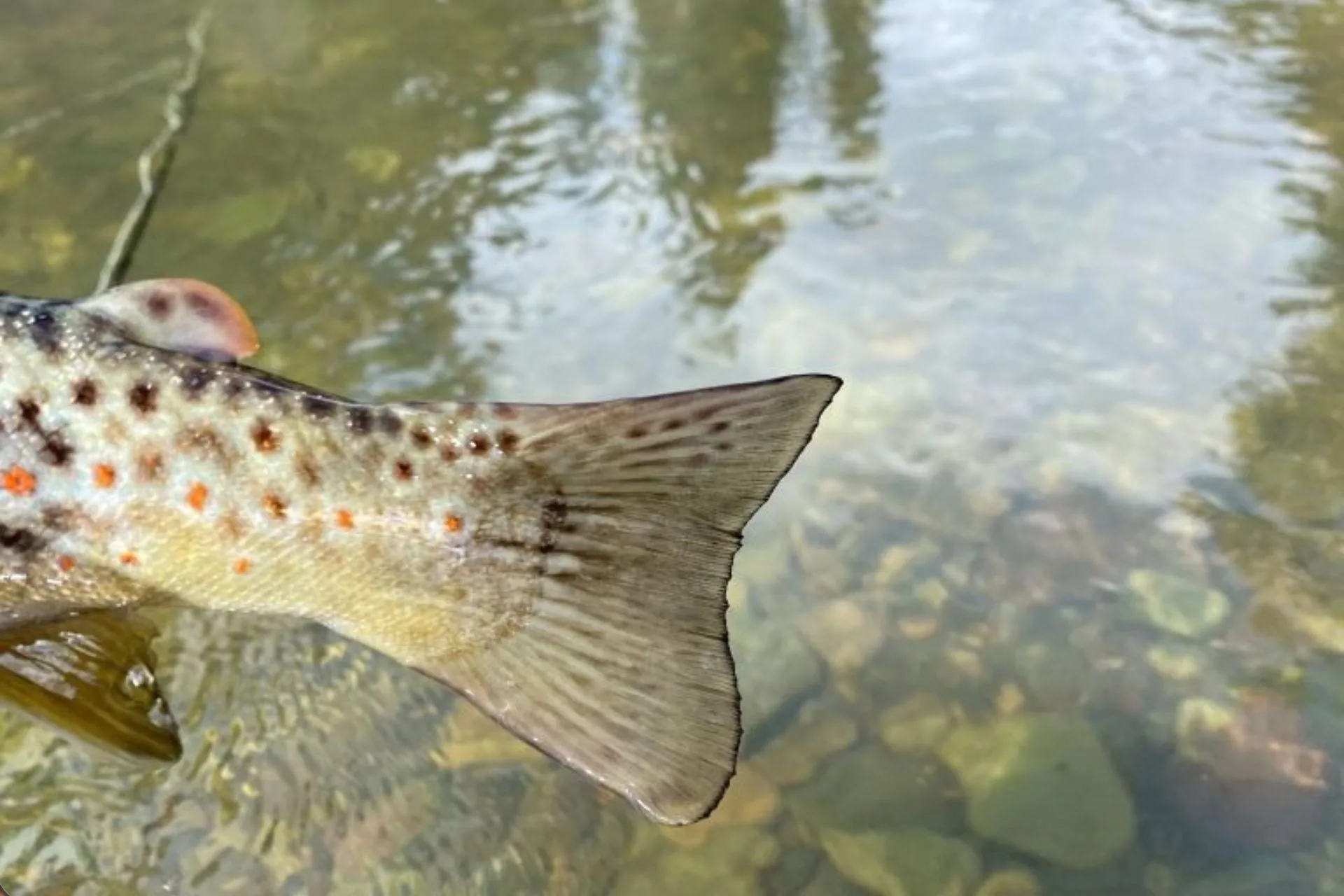The following fishing report is by Wild Montana Anglers:
Early May brings all normal spring weather and conditions
Big Rivers
If you do fish the big rivers right now, focus all your energy on the softest, slowest water you can find. With spring flows raging and most tributaries blown out or actively hosting spawning fish, the trout that aren’t up in the creeks are hunkered down—trying to conserve energy and stay out of the heavy current. Look for those inside bends, back eddies, slow seams behind structure, or flooded side channels—anywhere that gives fish a break from the push of the main river. These spots may not look fishy at first glance, but right now, they’re the best chance you have.
Keep your rigs heavy, bright, and bold. We’re talking big split shot, long leaders, flashy flies—things that will both get down fast and stand out in the off-color water. It’s not about subtlety right now; it’s about getting in front of the fish and triggering a reaction. Don’t be afraid to fish a two-fly setup with a flashy attractor followed by something a little more natural—give those fish something to key in on.
And remember, safety comes first. Flows are strong, the water is cold, and footing is unpredictable in these conditions. Even if the fishing looks doable from the bank, wading can be extremely risky. At Wild Montana Anglers, we’re calling it like we see it—right now, the risk just isn’t worth the reward. The fish will still be there when things settle down, and in the meantime, we’re keeping our efforts focused on safer water and smarter fishing opportunities
Dries
Not Happening at the moment
Bobbers
Big and Flashy!


Small Water
Our local small water is also on the rise, and while clarity is still holding on for now, we’re definitely seeing trout shift into more stable feeding lies. The fish are adapting, settling into spots where they can access food without burning excess energy in the current. Key areas to target include inside corners, cut banks, seam lines, and boulder pockets—any structure that breaks current and creates softer edges where trout can comfortably hold and feed.
Keep your presentations tight to structure and don’t overlook shallow runs or softer pockets that might look too skinny—fish are getting creative with where they tuck in. As the water rises, access becomes trickier, and positioning is everything. Make smart casts, move deliberately, and think like a trout trying to stay out of the hydraulic washing machine.
The bug activity has been excellent, and it’s been a real treat to see. Several species of mayflies and stoneflies have been popping throughout the day, depending on light and water temps. Nymphing continues to be the most consistent method, especially in the deeper buckets and along those slower seams. That said, we’ve been able to pick off a few nice fish on dry-dropper rigs, particularly in transitional water where depth and current speed make it possible for fish to look up.
You might catch the occasional dry fly sipper, but they’re usually found in very specific spots—think tailouts of long runs, soft foam lines, or those calm slicks where food naturally collects. It’s technical fishing, but rewarding when it comes together.
That said, flows are continuing to build, and this water is starting to get a little pushy too. Wading should be done with caution—what was easy footing last week might be unstable now. For the time being, I still think this small water will fish decently throughout the week, as long as flows hold steady. If we see another big spike, though, it may join the list of waters better left alone until things mellow out. Keep an eye on the gauges and fish smart.
Dries
Small to mediun foam flies have had some success. Golden and black seem to garner the most attention. Parachute flies in olive, brown and grey have also been productive in waters where fish are actively feeding on top.
Leader setups have been pretty robust with 2-4x leaders. There is no need to get much smaller than that due to the turbidity in the water column as well the snags that one will encounter when fishing cut banks and structure floating through the water.
Bobbers
Bobbers have been pretty productive this week on our smaller waters. Stoneflies, mayflies, and different varieties of worm flies have all brought fish to hand. Deep has been better than shallow in the waters that we targeted this week. Fish seem dispersed throughout the river in a variety of water so don’t be shy in targeting a variety of water.
2x through 4x have all been used in our leader setups with mostly the big tippet being used unless the flies is smaller than 16. Error on the side of bigger tippet. You will be happier when you get snagged on structure nymphing deep or hooking into the big one.
Stoneflies: black, brown and yellow have been used. sizes #8-#12
Maylfies: in sizes #12-#16. Color hasn’t seemed to matter.
Worms: sizes #8-#14. Wine and red have been used.
Streamers
Streamer fishing appears to still be productive. Our angles did not fish many streamers but while chatting with some other anglers they were having mixed success with throwing “the meat”.
Try transition waters where it goes from shallow to deep as well a lower portions of the hole or run. Hold on, there might be a good one that smashes the streamer!
Stillwaters
Some are good and some are not so good! If you are in the business of catching trout on our local stillwaters I would do it sooner rather than later. Out local grayling lake has seen a steep decline in the catch rate due to the fact that they are moving into tributaries to spawn.
Toothy critters fishing should be on the increase with our weather this last week. We have not had a look for ourselves but plan on doing so this week with our other fisheries being too big to fish. We will keep ya posted on what is happening out there in the next fishing report.
As always folks, stay safe out there and let us know if you have any questions or would like to get out on the water with the best guides around the Glacier National Park area.



